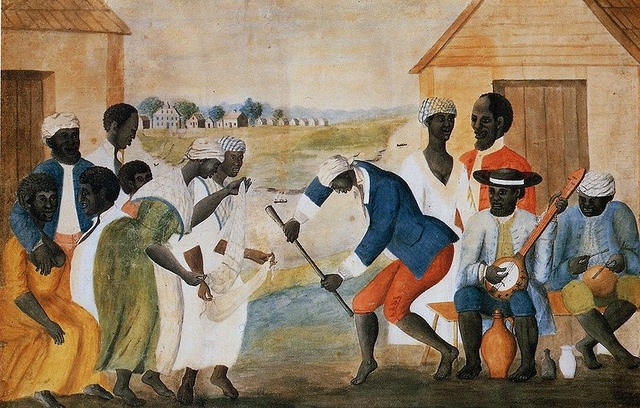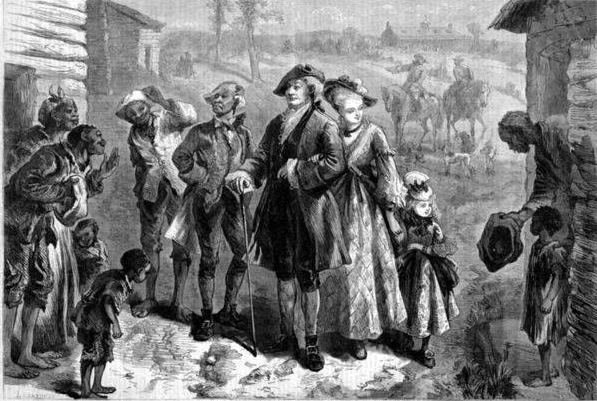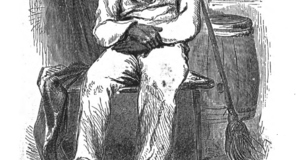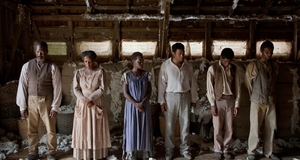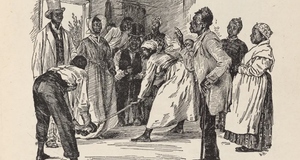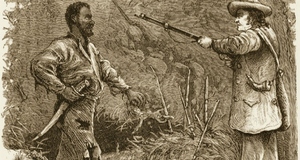Featured Article:Sexual Relations Between Elite White Women and Enslaved Men in the Antebellum South: A Socio-Historical Analysis
By
2013, Vol. 5 No. 08 | pg. 1/1
IN THIS ARTICLE
KEYWORDS
AbstractThere is ample evidence of sexual relations, from rapes to what appear to be relatively symbiotic romantic partnerships, between white slave masters and black women in the Antebellum South. Much rarer were sexual relations between white women and black slave men, yet they too occurred. Using an intersectional socio-historical analysis, this paper explores the factors that contributed or may have contributed to the incidence of sexual encounters between elite white women and slave men, the power dynamics embedded in them, and their implications in terms of sexual consent. The paper demonstrates how upper-class white women who engaged in these relationships used sex as an instrument of power, simultaneously perpetuating both white supremacy and patriarchy. According to former slave Harriet Jacobs, author of Incidents in the Life of a Slave Girl (1861), “The slave girl is raised in an atmosphere of licentiousness and fear. The lash and the foul talk of her master and his sons are her teachers. When she is fourteen or fifteen, her owner, or his sons, or the overseer, or perhaps all of them, begin to bribe her with presents. If these fail to accomplish their purpose, she is whipped and starved into submission to their will.” Jacobs’ account of the sexual violence endured by slave women is merely one of many. Although it is impossible to know exactly how many black women were sexually assaulted under slavery, such abuse was widespread. 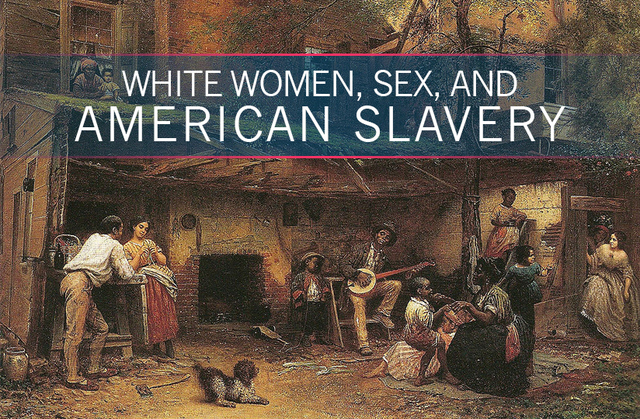 Not all sexual encounters between masters and female slaves would be considered rape according to most definitions of the term.1 Concubinage-type arrangements and even long-term romantic partnerships, perhaps most famously that of Thomas Jefferson and Sally Hemmings, were known to exist. Yet, many scholars would agree that “even presumably affectionate and long-term relationships must be reconsidered given the context of slavery” (Foster, 2011, p. 459). The enormous imbalance of gender and racial power between the two parties problematizes the notion of a truly consensual romantic relationship between a slave master and his female slave. These so-called consensual sexual partnerships can be seen, like rape, as an exercise in white patriarchal authority. Not all sexual encounters between masters and female slaves would be considered rape according to most definitions of the term.1 Concubinage-type arrangements and even long-term romantic partnerships, perhaps most famously that of Thomas Jefferson and Sally Hemmings, were known to exist. Yet, many scholars would agree that “even presumably affectionate and long-term relationships must be reconsidered given the context of slavery” (Foster, 2011, p. 459). The enormous imbalance of gender and racial power between the two parties problematizes the notion of a truly consensual romantic relationship between a slave master and his female slave. These so-called consensual sexual partnerships can be seen, like rape, as an exercise in white patriarchal authority.
Why these women chose to sexually abuse slaves probably varied by situation. Perhaps some of them were simply bored or sexually frustrated. But perhaps, at least on a subconscious level, sexually exploiting slaves was a means of compensating for their lack of power in other aspects of their lives. But what of sexual relations between planter-class white women and slave men? Under what conditions did they occur? How should they be described in terms of power, agency, and consent? Answering these questions involves analyzing historical records through the lens of power relations, parsing through the complexities of racial, class, and gender hierarchies. By “focusing attention on the ways that multiple and sometimes conflicting sources of oppression and power are intertwined,” such an intersectional analysis allows us to make sense of how persons occupying a position of low-status in one social arena can simultaneously occupy one of high-status in another (Aulette, Wittner, and Blakely, 2009, p. 5). They also allow us to observe the processes by which social hierarchies are sustained. In the case of white women and black men, we can use an intersectional analysis to better understand the ways in which elite Southern white women used oppressive, gendered notions of female purity and sexual subservience to maintain racial hierarchy. “Prisoners in Disguise”As guardians of the home, planter-class white women were responsible for upholding traditional Christian values and keeping peace within the domestic sphere. As such, they were valued for their homemaking abilities, maternal instinct, and, perhaps above all else, their virtue. As one letter to a South Carolinian periodical geared toward young women put it, If a female possesses beauty, wealth, and, in short, all the accomplishments which wealth can purchase… without VIRTUE, she is “nothing worth.” Her accomplishments may be admired by some for a little while, it is true; but she will never be truly esteemed… Permit me to ask, which would you rather have, Virtue without accomplishments, or accomplishments without Virtue? (Anonymous, 1832). Women were seen as physically and intellectually inferior to men, but much more pious, pure, and moral (Firor Scott, 1970, 4; Varon, 1998, pp. 10, 13). This trope is expressed by Rev. William Hooper in his 1947 address to the graduating class of the Sedgwick Female Seminary in Raleigh, North Carolina: Leave men to themselves without the intermixture of female society and the softening influence of female modesty, gentleness and affection, and they would infallibly become rude, harsh, coarse, quarrelsome, and in their quarrels cruel and unrelenting. The world would resemble an amphitheatre of wild beasts. The honor and virtue Southerners attributed to white women—especially of the upper class—was “nearly synonymous with a reputation for sexual purity, sustained by restraint, prudence, and modesty in every area of life” (Elder, 2012, pp. 583-84). “If you want to be fully convinced of the abominations of slavery, go on a southern plantation, and call yourself a negro trader. Then there will be no concealment; and you will see and hear things that will seem to you impossible among human beings with immortal souls.” Harriet Ann Jacobs White women’s sexuality was heavily regulated by law as well as by culture. Adultery was considered a greater offense for women than for men, and was punished more harshly. Similarly, “giving birth out of wedlock was... considered much more of a social problem for white women than for anyone else” (Young and Spencer, 2007, p. 69). The Old Plantation (Slaves Dancing on a South Carolina Plantation), circa 1785-1795, attributed to John Rose. The Southern way of life, and the institutions that defined it—white supremacy, slavery, and the planter aristocracy—were inextricably linked with the sexual regulation of women, especially upper class women; the purity of white women, when contrasted with the sexually lascivious black Jezebel archetype, served to highlight the alleged superiority of white womanhood, and by extension, whiteness (Brooks Higginbotham, 1992, p. 263). As historian Catherine Clinton (1982) observes, “If plantation mistresses could live above reproach, their husbands, fathers, sons, and brothers could boast of the superiority of their civilization… The sullying influence of slavery must not touch the women of the upper class lest the entire structure crumble.” Coupled with the notion of elite white female sexual virtue was that of white female vulnerability—the idea that plantation wives and daughters needed to be protected, defended, and sheltered. Framing women in this way served as a means of patriarchal control. As political scientist Iris Young (2003) explains, “the role of the masculine protector puts those protected, paradigmatically women and children, in a subordinate position of dependence and obedience.” White women whose affairs with slaves were made known faced varying degrees of public humiliation. When a planter’s daughter or wife was discovered to be pregnant by a slave, great pains were taken to cover up the pregnancy. The resulting child might have been sold into slavery, but infanticide was not an uncommon means of avoiding scandal Indeed, planter-class women were considered the property of their husbands (Hodes, 1997, p. 51). Their freedom and mobility was severely limited; for example, they were generally not allowed to travel without an older male chaperone (Clinton, p. 136). Spousal abuse was often considered a legitimate method for men to control their wives (Hodes, p. 72). Clinton calls Southern plantation mistresses “prisoners in disguise” (p. 145). This is undoubtedly an exaggeration, but the fact remains that upper class white women, whatever luxuries their privileged race and class status afforded them, faced a unique set of limiting patriarchal dicta.
Indeed, in private, many plantation women were unhappy with their lack of freedom and the expectation that they remain dutiful, obedient, pleasant, and cheerful while their husbands had affairs with or raped female slaves.2 Knowing that the mixed-race slave children who surrounded them were their husbands’ offspring was both humiliating and heartbreaking. Southern women, who generally married at a younger age than those in the North—not infrequently at fifteen or sixteen years old (Clinton, pp. 85-86)—were often left abandoned on plantations while their husbands travelled for business, pleasure, or military duty (Clinton, p. 103). The life of a plantation mistress was often lonely and sad. Sex Between White Women and Male Slaves: An OverviewThe fact that affairs between planter-class women and slaves were relatively uncommon is unsurprising; white women in the South were sexually restricted as compared to their male counterparts, and nineteenth-century contraceptive techniques were not nearly effective or accessible enough to ward off the possibility of pregnancy. Still, sexual contact between white women and black men did occur in slaveholding societies, more often than perhaps many are aware. The following is a list of factors that did or may have contributed to the incidence of such relations. First, even though the sexuality of Southern white women was, as stated, heavily regulated, women were not as entirely sexually repressed as one might assume. According to historian Elizabeth Fox-Genovese (1998), “slaveholding culture emphasized control of female sexuality; it did not deny its existence.” She says that white women “had a striking lack of neurotic inhibition.” Like their husbands, Southern women had pre- and extra- marital sex (though not as often). The dangers of having sexual relations with a black man rather than a white man were enormous in terms of the possibility of producing a mixed-race child. However, although birth control and abortion methods in the nineteenth-century were not as widely used, safe, or accessible as they are today, they existed. Condoms made out of animal skin, membrane, oiled silk, and rubber were used along with other contraceptive techniques to prevent pregnancy (Caron, 2008, p. 16). For much of the nineteenth-century, abortion was largely unregulated, and it was not limited to poor, immigrant, or black women; upper- and middle-class white women, too, had abortions (Caron, pp. 22-23). This would have allowed white women to have affairs with black men with some level of confidence that they would not be caught. There is also a possibility that affairs between white women and slaves were simply not noticed or recorded as often as they occurred. While it may have been expected, to a certain extent, that white men would transgress morally (e.g. by having sexual relations with slaves), a white woman choosing to have sex with a black man might not have been considered a likely occurrence. Additionally, an upper-class woman under suspicion of an affair with a slave could “readily invoke images of chastity in order to allay trouble for herself”—or in other words, accuse the slave of rape (Hodes, p. 135). Because black men (like black women) were seen as inherently lustful and prone to sexual vice, for an elite woman to have illicit sex with a black rather than a white man might have been a slightly safer bet; it was easier to blame a black man of rape than a white man. Why these women chose to sexually abuse slaves probably varied by situation. Perhaps some of them were simply bored or sexually frustrated... It is possible the sexual exploitation of slaves by women who had little power in relation to white men was a source of enjoyment that created a feeling of power. White women whose affairs with slaves were made known faced varying degrees of public humiliation. When a planter’s daughter or wife was discovered to be pregnant by a slave, great pains were taken to cover up the pregnancy. The resulting child might have been sold into slavery, but infanticide was not an uncommon means of avoiding scandal (Hodes, pp. 136-137). Of course, scandal was not always avoided. In his 1837 autobiography, former slave Charles Ball describes meeting “the daughter of a wealthy planter, in one of the lower counties of Georgia” who had given birth to a mixed-race son. The family considered sending her out of state until the birth, but instead “the girl was kept in her father’s house, until the birth of her child, which she was not permitted to nurse; it being taken from her.” She was “degraded from her rank in society” and her child was sold into slavery. Sexual Agency, Power, and ConsentAccording to one historian, “few scholars… have viewed the relationships of enslaved men and free white women through the lens of sexual abuse in part because of gendered assumptions about sexual power” (Foster, p. 459). This is in keeping with both the standard feminist conceptualization of rape as a tool of patriarchal oppression3 as well as the traditional (un-feminist) notion of women as too weak, emotionally and physically, to commit serious crimes, let alone sexual abuse, and the idea that men cannot be raped (Bourke, 2007, pp. 219, 328). However, it is becoming increasingly clear that women, too, are capable of committing sexual offenses and using sex as a means of domination and control (Bourke, pp. 209-248). Indeed, there is considerable documentation of white women coercing black men into having sex. According to Captain Richard J. Hinton, an abolitionist commander in the Civil War, “I have never found a bright-looking colored man, whose confidences I have won… who has not told me of instances where he has been compelled, either by his mistress, or by white women of the same class, to have connection with them” (Hodes, pp. 130-131). One former slave told Hinton that his mistress ordered him to sleep with her after her husband died (Hodes, p. 131). These are just two examples of the many stories abolitionists like Hinton told to prove the immorality of slaveholding. In Incidents in the Life of a Slave Girl (1867), Jacobs mentions how planters’ daughters would take advantage of male slaves. They know that the women slaves are subject to their father's authority in all things; and in some cases they exercise the same authority over the men slaves. I have myself seen the master of such a household whose head was bowed down in shame; for it was known in the neighborhood that his daughter had selected one of the meanest slaves on his plantation to be the father of his first grandchild. She did not make her advances to her equals, nor even to her father's more intelligent servants. She selected the most brutalized, over whom her authority could be exercised with less fear of exposure. Even if the young white woman in this story did not consider herself a sexual assaulter (which she probably did not), this is clearly sexually predatory behavior. The kind of relationship described here, which Jacobs suggests was not uncommon, cannot be classified as consensual in any meaningful sense of the word, and in fact constitutes a form of sexual abuse, if not rape. We thus see that plantation mistresses and elite women, like their male counterparts, were able to sexually control and abuse their slaves. Another way in which white women were able to exercise sexual control over slaves was by threatening to accuse them of rape or attempted rape if they did not agree to sex (Hodes, pp. 39, 40, 43, 46, 135).4 In doing this, elite white women used one of the primary instruments of patriarchal repression—the idea that that they were weak and in need of white male protection, and by extension, in need of control and domination by white men—to exercise racial control over slaves. Instead of attempting to dismantle the white patriarchal hegemony that oppressed both slaves and (to a lesser extent) white women, predatory white women who coerced slaves into sex through threat of rape opted to perpetuate both white supremacy and patriarchy, by reinforcing paternalistic notions of female sexuality. Why these women chose to sexually abuse slaves probably varied by situation. Perhaps some of them were simply bored or sexually frustrated. But perhaps, at least on a subconscious level, sexually exploiting slaves was a means of compensating for their lack of power in other aspects of their lives. Again, planter-class women were considered the property of their husbands and lacked considerable sexual agency relative to men. It is possible the sexual exploitation of slaves by women who had little power in relation to white men was a source of enjoyment that created a feeling of power (Bourke, p. 237). This is not to excuse the actions of sexually abusive white women, nor is it to suggest that female sexual abuse of slave men would not have occurred had women enjoyed a higher status in society. However, just as slave-owning white women often took out their frustrations on slaves through excessive cruelty and violence, they probably also used sex as a means of domination and control in a society in which they were relatively powerless.5 Concluding ThoughtsThe issue of upper class white female sex with—and sexual abuse of—male slaves has not received the scholarly attention it deserves. Hodes’ White Women, Black Men is the only book on the subject; most other works on Antebellum slaveholding society either mention it in passing or, like Clinton’s The Plantation Mistress, dismiss the possibility of upper class women having sex with slaves. Although such relations were rarer than sex between male masters and slave women, they were no less complicated, problematic, and potentially exploitative, and no less worthy of scholarly analysis. ReferencesAnonymous, “Letter to the Editor,” The Rosebud 4, 1 (September 22, 1832). Aulette, Judy, Judith Wittner, and Kristin Blakely. Gendered Worlds. Oxford: Oxford University Press, 2009. Ball, Charles. Slavery in the United States: A narrative of the life and adventures of Charles Ball, a black man, who lived forty years in Maryland, South Carolina and Georgia, as a slave (1837). 3rd edition. Pittsburgh: John T. Shryock, 1854. Bourke, Joanna. Rape: Sex, Violence, and History. Great Britain: Virago Press, 2007. Brooks Higginbotham, Evelyn. “African American Women’s History and the Metalanguage of Race” Signs 17 (1992): 251-274. Brownmiller, Susan. On Our Backs: Men, Women and Rape. New York: Simon and Schuster, 1975. Caron, Simone M. Who Chooses? American Reproductive History Since 1830. Florida: University Press of Florida, 2008. Clinton, Catherine. The Plantation Mistress: Woman’s World in the Old South. New York: Random House, Inc., 1982. Elder, Robert, “A Twice Sacred Circle: Women, Evangelicalism, and Honor in the Deep South, 1784-1860.” The Journal of Southern History 78, 3 (2012): 579-614. Foster, Thomas A. “Sexual Abuse of Black Men Under American Slavery.” Journal of History and Sexuality 20, 3 (2011): 445-464. Fox-Genovese, Elizabeth. Within the Plantation Household: Black and White Women of the Old South. Chapel-Hill: University of North Carolina Press, 1988. Higginbotham, Evelyn Brooks. “African American Women’s History and the Metalanguage of Race” Signs 17 (1992): 251-274. Hodes, Martha. White Women, Black Men: Illicit Sex in the Nineteenth-Century South. New Haven: Yale University Press, 1997. Hooper, William, “Address on Female Education,” Address on female education, given to the Sedgwick Female Seminary, Raleigh, N.C. (February 27, 1847). Jacobs, Harriet A. Incidents in the Life of a Slave Girl., Written by Herself. Edited by Maria Fairchild. Boston: Published for the author, 1861. Accessed online at http://etext.lib.virginia.edu.myaccess.library.utoronto.ca/eaf/. Powell, Anastasia. Sex, Power and Consent: Youth Culture and the Unwritten Rules. Melbourne, Australia: Cambridge University Press, 2010. Scott, Anne Firor. The Southern Lady: From Pedestal to Politics, 1830-1930. Chicago: University of Chicago Press, 1970. Varon, Elizabeth R. We Mean to Be Counted: White Women and Politics in Antebellum Virginia. Chapel Hill: University of North Carolina Press, 1998. Young, Iris Marion. “The Logic of Masculinist Protection: Reflections on the Current Security State” Signs 29, 1 (2003): 11-25. Young, Vernetta D. and Zoe Spencer. “Multiple Jeopardy: The Impact of Race, Gender, and Slavery on Women in Antebellum America,” in Race, Gender, and Punishment: From Colonialism to the War on Terror, edited by Mary Bosworth and Jeanne Flavin, 65-76. New Brunswick, NJ: Rutgers University Press, 2007. Endnotes
Suggested Reading from Inquiries Journal
Inquiries Journal provides undergraduate and graduate students around the world a platform for the wide dissemination of academic work over a range of core disciplines. Representing the work of students from hundreds of institutions around the globe, Inquiries Journal's large database of academic articles is completely free. Learn more | Blog | Submit Latest in History |

